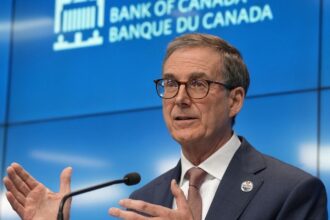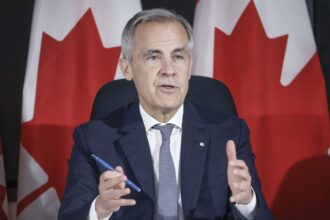The Bank of Canada stands at a crossroads that could shape Canada’s economic trajectory for years to come. With inflation hovering persistently above target and housing costs continuing to squeeze household budgets, Governor Tiff Macklem faces what analysts are calling “the most consequential decision of his tenure” at the upcoming June 5th meeting.
“The stakes couldn’t be higher,” explains economist Patricia Silverstein of BMO Capital Markets. “Cut too soon, and inflation could reignite. Wait too long, and economic growth could stall completely. The Bank is navigating between Scylla and Charybdis.”
The data presents a mixed picture that has left even seasoned market watchers divided. April’s inflation reading came in at 2.7%, marking the third consecutive month above the Bank’s 2% target. Meanwhile, GDP growth has slowed to an anemic 0.8% annualized rate in the first quarter, suggesting the economy is feeling the weight of the current 5% benchmark rate.
Housing affordability—a political lightning rod and economic pressure point—continues to worsen despite the high interest rate environment. Average rents in major urban centers have climbed 8.6% year-over-year, while mortgage payments have increased by nearly 22% for new homebuyers compared to 2022 levels.
The central bank’s decision will reverberate through every sector of the Canadian economy. Real estate developers have already scaled back projects, with housing starts down 17% from last year. The manufacturing sector has shed 32,000 jobs since September, while retail sales have contracted for three consecutive months.
“The Bank’s credibility is on the line,” notes former deputy governor Paul Jenkins. “If they cut and inflation surges, Canadians will question their commitment to price stability. If they hold and the economy falters further, they’ll be accused of causing unnecessary pain.”
Global factors complicate the decision further. The Federal Reserve has signaled it may hold rates higher for longer, creating potential pressure on the Canadian dollar should the Bank of Canada move first. Oil prices have moderated recently, providing some relief, but geopolitical tensions continue to threaten supply chains and commodity prices.
Financial markets are pricing in approximately a 65% chance of a rate cut in June, with traders increasingly betting on at least three quarter-point reductions by year-end. But economists from CO24 Business caution that the Bank may prefer to wait until July when it will have more inflation data and updated economic projections.
For everyday Canadians, the decision’s impact will be felt immediately in variable mortgage rates, lines of credit, and consumer loans. A family with a $500,000 variable-rate mortgage would save approximately $140 monthly with a quarter-point cut—welcome relief for stretched budgets, but hardly game-changing given the cumulative rate increases since 2022.
As the June decision approaches, the pressure mounts on Macklem and his colleagues to thread an increasingly narrow needle. The path they choose will influence everything from housing affordability to job creation, setting the tone for Canada’s post-pandemic economic recovery.
The question remains: will the Bank of Canada prioritize fighting the last war against inflation, or pivot to address growing concerns about economic stagnation? The answer arrives June 5th, and millions of Canadians will be watching closely.

























